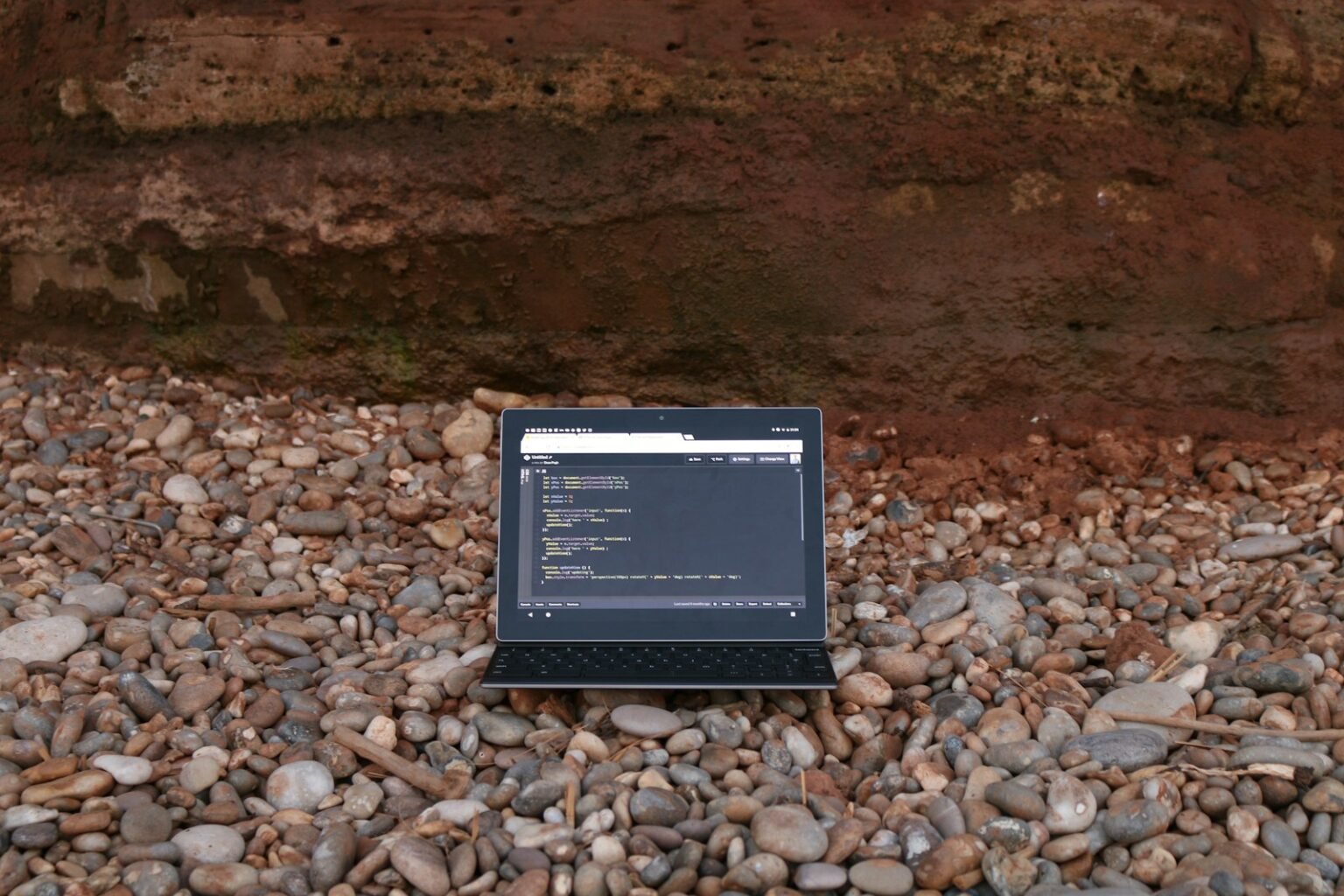Programming languages are fundamental to the development process, allowing programmers to build various types of programs, websites, etc. Some languages are easier to learn compared to others and, thus, these languages can be recommended for beginners. This article explores the 10 Easiest Programming Languages, breaking down their overview, features, specifications, and use in technology.
1. Python
Overview
Python is an interpreted language that is considered to be a high level language, due to its simplicity. Python is interpreted, high-level programming language; it was born in Netherlands by Guido van Rossum in 1991 and latest version is 3.4, built on CPython; readability is Python’s main focus where use of indentation is significant.
Features
- Simple Syntax: Python is easy to learn and easy to use due to its simple syntax which anyone, even a person with no programming knowledge can read and implement.
- Interpreted Language: Python is also interpreted line-by-line, this makes it easier to debug.
- Extensive Libraries: Python has a large standard library and many third-party libraries available that style the development process is swift.
- Cross-Platform: Python is compatible with different operating systems such as Windows operating system, MAC operating system, Linux among others.
Specifications
- Typing Discipline: Dynamic typing, strong typing.
- File Extensions: .py, .pyc, .pyd, .pyo, .pyw, .pyz.
- Latest Stable Release: Python 3.10.
- Development Paradigms: Object-oriented, procedural, functional.
Use in Technology
Python is used in web development, data sciences, artificial intelligence, machine learning, automation, and many others. Web development is also supported by frameworks such as Django, Flask, etc., and data science and Machine Learning have libraries like TensorFlow, Pandas, etc.
2. JavaScript
Overview
JavaScript is one of the interpretation type languages or scripting languages, which are imperative languages that are necessary for web development. JavaScript is an interpreted scripting language for creating interactive Web pages by Brendan Eich in 1995 as an extension of Netscape and became an essential part of web browsers.
Features
- Versatile: JavaScript also used for front end and back end development.
- Event-Driven: Enables a form of programming that is not simultaneous, thus providing the user with a better experience.
- Rich Interfaces: Enables the creation of interactive websites with features like drag-and-drop and multimedia integration.
- Large Ecosystem: Various libraries and frameworks that are in common use today include React, Angular, node and many others. js, extend JavaScript’s functionality.
Specifications
- Typing Discipline: Dynamic typing, weak typing.
- File Extensions: .js.
- Latest Stable Release: ECMAScript 2021.
- Development Paradigms: Event orientated, BIS-orientated, Control orientated.
Use in Technology
JavaScript is primarily used for creating application for the web and enhancing user interfaces. It’s also used in server-side developments also with the help of Node. js, building mobile applications using the app development frameworks like React Native, and video games using libraries like Phaser.
3. Ruby
Overview
Ruby is another language of its own kind for developing interactive applications which was invented by Yukihiro Matsumoto in the mid 1990s. It is widely used for its simplicity and productivity. Ruby emphasizes readability of code and the programmer’s ability to understand what the code does.
Features
- Elegant Syntax: Compared with other programming languages, the syntax of Ruby is clean, easy to understand, and quickly to catch by newcomers.
- Dynamic Language: Supports both dynamic typing, and dynamic method call.
- Metaprogramming: Ruby allows code to be written that can manipulate itself during runtime.
- Garbage Collection: It prevents memory leaks since there is no manual need to allocate memory.
Specifications
- Typing Discipline: Dynamic typing, duck typing.
- File Extensions: .rb.
- Latest Stable Release: Ruby 3.0.
- Development Paradigms: These are indeed four paradigms namely; Object-oriented, reflective, imperative and functional paradigms.
Use in Technology
Ruby is most famously employed in web development and the Ruby on Rails Framework which assists in the fast development of web applications. It’s also applied in auto industry, data mining and collection, website crawling and data analysis.
4. HTML/CSS
Overview
HTML (HyperText Markup Language) and CSS (Cascading Style Sheets) are the primary languages of the web. HTML defines the webpage layout, while CSS formats the content. While not strictly considered programming languages, they are, in fact, crucial for web development.
Features
- Easy to Learn: HTML and CSS are easy to learn and understand, especially for persons with little programming experience or knowledge.
- Content Structuring: HTML consists of tags that help in the structuring of the content of the page to be displayed on the web.
- Styling: CSS also allows specific styles and arrangement of the web page to be achieved.
- Responsive Design: CSS also encourages the creation of websites that are compatible with mobile devices.
Specifications
- HTML File Extensions: .html, .htm.
- CSS File Extensions: .css.
- Latest Stable Release: HTML5, CSS3.
- Development Paradigms: Declarative for both HTML and CSS.
Use in Technology
HTML and CSS are essential in the construction of websites and are used at the core level of web developing. HTML defines the layout and content of websites, while CSS is used to manage the look of the layout and make it more attractive and functional for the users.
5. Scratch
Overview
Scratch is an open-source, programming language developed by the MIT Media Lab majorly for learning for children or new or first-time programmers. It employs a GUI in which a user can write a program by dragging blocks and connecting them himself.
Features
- Visual Interface: Scratch operates by using graphic blocks to symbolize the code ideas; thus, it is easy to use.
- Educational Focus: Aimed at teaching programming concepts in a fun and engaging way.
- Community Support: There is a big space in Scratch where people can post projects and discuss the ideas.
- Interactive Projects: Enables the generation of games, animations and interactive stories.
Specifications
- Typing Discipline: Not applicable (visual blocks).
- File Extensions: .sb3, .sb2, .sb.
- Latest Stable Release: Scratch 3.0.
- Development Paradigms: Event-driven, block-based.
Use in Technology
Scratch is widely used to introduce the basic concepts of programming into the education process. Through using blocks it helps the young learner or beginners to understand the flow of the program without the framework of the code, it enhances creativity and problem-solving skills.
6. Swift
Overview
Swift is a modern and open source programming language created by Apple for iPad, Mac, and other Apple devices which include watch and television. Initially launched in 2014, Swift is easy to use and a very efficient language.
Features
- Modern Syntax: Swift uses less code and is full of expressions that make code even more condensed.
- Safety: Swift includes features like optionals and type inference to prevent common programming errors.
- Performance: Swift is optimized for execution, at times it outperforms some compiled C-based programming languages.
- Interoperability: Swift can coexist with Objective-C, allowing for gradual codebase migration.
Specifications
- Typing Discipline: Static typing, strong typing.
- File Extensions: .swift.
- Latest Stable Release: Swift 5.4.
- Development Paradigms: Protocol-oriented, object-oriented, functional, imperative.
Use in Technology
Specifically, Swift is used when creating applications for the Apple environment. It’s the primary language for iOS and macOS application development accompanied by tools such Xcode and frameworks such as SwiftUI and UIKit.
7. PHP
Overview
PHP is Hypertext Preprocessor, a server side scripting language used for web development. Developed by Rasmus Lerdorf in the year 1994, PHP is used in the development of dynamic web pages.
Features
- Embedded in HTML: it is a scripting language that can be written in HTML code to add functional attributes to web pages.
- Server-Side Execution: PHP code runs on the server, generating HTML sent to the client.
- Database Integration: PHP works well with databases including MySQL to support content that changes frequently.
- Open Source: PHP is open source and millions of people contribute to it and this benefit cannot be overemphasized.
Specifications
- Typing Discipline: Dynamic typing, weak typing.
- File Extensions: .php, .php3, .php4, .php5, .phtml.
- Latest Stable Release: PHP 8.0.
- Development Paradigms: Imperative, object-oriented, functional.
Use in Technology
PHP is widely used in web development for making dynamic and interactive websites for users. Many content management systems such as WordPress, Joomla, and Drupal are created using PHP, making it the standard for web development.
8. Go
Overview
Go, also known as Golang, is a statically typed, compiled, concurrent programming language created by Google. Developed in 2009, Go is appreciated for its concise syntax and effectiveness in creating large-scale and concurrent software systems.
Features
- Concurrency Support: Golang has capabilities to handle concurrent programming using goroutines.
- Simplicity: Go has clean syntactic structure that helps to eliminate unnecessary complexity.
- Fast Compilation: Go compiles to machine code which increases performance as opposed to other interpreted languages.
- Garbage Collection: Automatic memory management simplifies development.
Specifications
- Typing Discipline: Static typing, strong typing.
- File Extensions: .go.
- Latest Stable Release: Go 1.16.
- Development Paradigms: Concurrent, imperative, object-oriented.
Use in Technology
It has been used in the cloud services, distributed systems, and large scale applications. Google, Uber, and Dropbox are examples of businesses that claim that Go is fast and scalable, which is especially important for web development and microservices.
9. R
Overview
R is both a language and an environment that has been designed specifically for statistical computations and graphical displays. R is a programming language for statistical computing and graphics designed by Ross Ihaka and Robert Gentleman in 1993.
Features
- Statistical Analysis: R comprises an extensive list of statistical methods and approaches.
- Data Visualization: R produces very detailed and easily customizable plots and graphics.
- Open Source: R is an open source tool and has a big community contributing packages and libraries.
- Extensibility: Users can write their own functions and extend R’s capabilities.
Specifications
- File Extensions: .R, .rds, .rda, .RData.
- Latest Stable Release: R 4.1.0.
- Development Paradigms: Procedural, object-oriented, functional.
Use in Technology
R is used for handling data, statistical modeling and graphical display of data. This is common in colleges, universities, research facilities and any institution or business entity that depends on data analysis. Quite a number of packages are available including the libraries like ggplot2 and dplyr that enhance the ability of R in data manipulation and graphical representation.
10. Kotlin
Overview
Kotlin is jet another statically typed programming language developed to run on Java virtual machine. Kotlin originally was introduced by JetBrains and was fully released in 2016 and also has full compatibility with Java.
Features
- Concise Syntax: Based on the comparison against Java, it can be stated that Kotlin produces less boilerplate compared to this language.
- Null Safety: Null pointer exceptions are avoided with Kotlin due to built-in null safety.
- Interoperability: Kotlin is fully interoperable with Java meaning that it is possible to leverage on any existing Java libraries and frameworks.
- Coroutines: Kotlin also has the coroutine feature that helps in easy handling of concurrency.
Specifications
- Typing Discipline: Static typing, strong typing.
- File Extensions: .kt, .kts.
- Latest Stable Release: Kotlin 1.5.
- Development Paradigms: Object-oriented, functional, imperative.
Use in Technology
It is most commonly used in building up android applications; it is an official supported language from Google for Android. It is also employed in server-side scripting, web development applications, as well as data science contexts and doesn’t lose from the ability to integrate with Java and achieve modern language capabilities.
Read Also: 15 Best Programming Languages
Final Words
Selecting the best and easy language to learn as you embark on coding determines the level of interest you have on the entire process. Python, JavaScript, Ruby, HTML/CSS, Scratch, Swift, PHP, Go, R, and Kotlin have various characteristics that make the languages suitable for specific uses. Today it is possible to employ these languages in web development, data science, mobile app development, or statistical analysis to have a strong start in programming.




